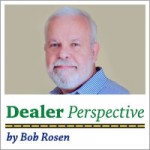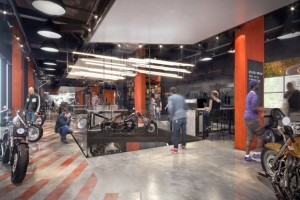 Even before un-virtuous ladies of the night could offer up their services something had to take place to generate interest and awareness for their “business.” They found themselves needing to sell their attributes to potential clients. Attracting interested parties, emphasizing the superiority of their offering over the competition, and negotiating a final price all come under the heading of Sales.
Even before un-virtuous ladies of the night could offer up their services something had to take place to generate interest and awareness for their “business.” They found themselves needing to sell their attributes to potential clients. Attracting interested parties, emphasizing the superiority of their offering over the competition, and negotiating a final price all come under the heading of Sales.
It’s fair to say that the Sales profession holds the honors of greatest longevity. When explaining what makes the world go ’round, an old boss of mine stated it simply: “Nothing happens until somebody sells something.”
That’s certainly true in the motorcycle business. Selling takes place in every department of a dealership. There are dedicated sales persons that spend all of their time attempting to move new and pre-owned units out the door. Parts and accessory personnel are responsible for improving revenue for their department by making it easy for customers to buy. There is a concerted selling effort undertaken in the service department whenever additional work is suggested. In successful dealerships, there is even selling activity in the business office where a bike buyer might be offered an extended warranty, tire and wheel insurance, and other enhancements to their deal.
For this column, let’s focus our attention on what happens when you enter a dealership with the possibility of buying a bike on your mind. A good sales experience starts with the sales person attempting to understand your wants and needs in the area of two-
wheeled conveyances. If he/she is doing their job, they can provide a valuable consultative element to your search for the perfect bike. Interviewing you, the prospective buyer, takes time and no small amount of awareness on the part of the sales person. Unfortunately, this does not always happen. Too many times, the lightly experienced and barely trained sales person thinks his role is to show you the bikes and hope like hell that you’ll buy one of the shining beauties on the floor. So, the very beginning of the dealership’s selling challenge is to understand the need for skilled sales people and making sure they are on the floor to stimulate the selling process.
Sales is a profession that calls on a host of skills and knowledge. Many of the skills employed are transferable among different products and services. An outstanding motorcycle sales person could easily be an outstanding sales person in a non-motorcycle environment. And that’s part of the reason you don’t find more top notch sales people working to sell you a motorcycle. Just follow the money. If one possesses the skill and work ethic to sell successfully, then I can say with great certainty that they will find greater earning opportunities outside the world of motorcycles. Even moving over to auto sales can significantly increase a sales person’s pay. There are plenty of car sales persons earning six-figure salaries. Not so in the world of motorcycles. Good sales people stay with bikes for reasons other than money.
Let’s say you’ve done your internet homework and have decided on a particular model of bike. You are greeted at your local dealer by an enthusiastic sales person. Actually, this simple act doesn’t happen often enough. The most common complaint among bike shoppers is that they were ignored after entering the showroom. An astute dealer can professionally attend to your needs. After the preliminaries are completed, the oldest  dance in the world begins. It’s your goal to buy the bike at the lowest possible price. It’s the dealership’s goal to sell the bike at the highest possible price. There are a couple of basic principles to keep in mind as the dance begins.
dance in the world begins. It’s your goal to buy the bike at the lowest possible price. It’s the dealership’s goal to sell the bike at the highest possible price. There are a couple of basic principles to keep in mind as the dance begins.
Dealership selling philosophies vary widely from store to store. Some dealers will give you a bottom line price the first time you ask. Others will be conservative and want to discuss pricing with you to maximize their profit on every deal. Dealerships are motivated by two very critical factors – gross profit and cash flow. The difference between all of the costs associated with the bike and the ultimate selling price is gross profit – the money the dealer keeps. Cash flow simply speaks to how well the dealer can keep up with his expenses. The buyer has no way of knowing what’s on the dealers mind on any given day.
The difference between MSRP and cost on bikes varies by brand and sometimes model. Typically, if a bike sells at full MSRP, the dealership will earn somewhere between 12% and 17% gross profit. On a $10,000 bike this is $1,200 at 12% to $1,700 at 17%. Depending on model, time of year, and other factors the dealer can earn additional profit from the manufacturer through special incentives.
Any costs added to a bike will reduce the final profit on the sale. This includes initial set-up, any parts or accessories “thrown in” with the deal, the labor to install these parts, delivery costs, etc. A hidden cost unknown to most buyers is the dealers cost to finance the bikes after they have arrived at the dealership. These “flooring” costs can really add up. If our $10,000 example bike has been on the dealer’s floor for a year or so, there can be an additional $500 or $600 of cost added to that bike.
Beyond gross profit on the deal, other factors are considered by dealers when selling a bike. These include the probability of selling the bike based on the current time of year, how many of that particular model are in stock, how long the bike has been in inventory, whether a new version of that model is coming out soon, and the selling history of that model.
And finally, we can’t forget about the sales person who is handling the deal. Unless you’re dealing directly with the owner of the dealership, there has to be some room in the price to pay the sales person a commission. Typically, motorcycle sales people are paid a small base salary and earn the rest of their pay through commissions. The commission structure provides a real incentive for sales people to get the highest price they can on every sale.
So, “How much is that bike?” is a question that kicks off some serious thought on the part of the dealership. Like any business, the dealership needs to generate some profits to keep the doors open. As you can see, what that will be on the bike you want to buy depends on a lot of factors.
 Ride CT & Ride New England Serving New England, NYC and The Hudson Valley!
Ride CT & Ride New England Serving New England, NYC and The Hudson Valley!

